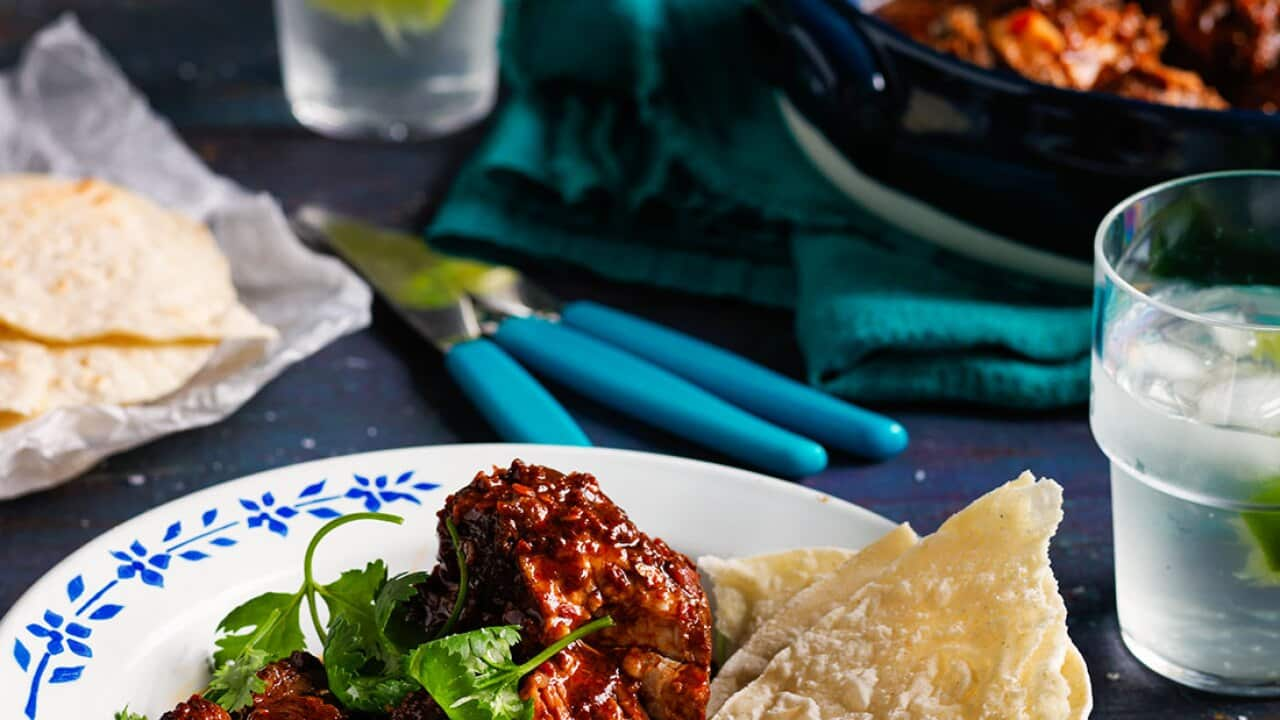Is there anything that captures our hearts quite like a few (read: a few too many) squares of chocolate?
Whether it’s because of the antioxidants and endorphins, laden in every bite, the proven links between it and a , or its exotic origins, chocolate remains a universally adored indulgence in all its many forms.
French-born Thibault Fregoni understands the allure of chocolate even better than most. “It is such a complete ingredient,” he tells SBS. “It involves politics, geography, history, science, artistry, taste. I can’t think of another ingredient so fulfilling intellectually and physically. Well, perhaps wine falls into that category, too…”
Having worked with and around chocolate in Australia (first Sydney, then Melbourne and now far-north Queensland) for the better part of two decades, his reverence for chocolate is hardly surprising – he’s absorbed it, soaked it up, carved a career out of it. These days, chocolate is Fregoni’s lifeblood, which is probably a notion many of us can relate to. His foray into the world of chocolate began in Sydney in the early 2000s while he was experimenting as a pastry chef, and has since culminated in a position at in Mossman, North Queensland, where he manages the company’s post-harvest facilities. “My job is overseeing the fermentation and drying of the cocoa, which are essential steps in creating good chocolate,” he says.
From cacao to square... Fregoni shows us the magic to behind chocolate-making.
Good chocolate: this distinction may not be pertinent to anyone with serious cocoa cravings on their way to the supermarket for a quick fix, albeit of the mass-produced kind. For the casual consumer, chocolate is chocolate.
Not so for Fregoni. The difference, he contends, is all in the cocoa beans, which come from the cacao pods; for anyone experimenting with DIY chocolate making at home, finding the right beans is paramount to the whole process. “It’s so important to get your hands on good quality cocoa beans, which can be tricky sometimes,” he says. “Cocoa pods take about 6 months to fully mature; you usually judge ripeness by their colour. Green pods turn yellow, purple pods turn orange. The pods will not fall on the ground as we are accustomed to other fruit trees – they will rot on the tree unless harvested. Each pod has an average weight of 500 g and contain about 30 seeds but sizes and shapes can be dramatically different depending on the tree genotypes available in the plantations.”
Once you’ve obtained the perfect dried, fermented cocoa beans, the next step is roasting. “This is an essential step which will decide the overall quality of the chocolate, he says. “Then the skin of the beans needs to be separated from the centre nibs by winnowing. These nibs are then ground to a paste with sugar and or milk depending on the recipe you’re following. When the paste has been finely ground, you have your chocolate!”
Sounds easy enough, right? Of course, Fregoni has a few tricks of the trade: “Ideally you’ll have a stone grinder to make your paste, but you could use a mortar and pestle for a small trial,” he says. “Chocolate doesn’t like strong odours and humidity, so wrap your chocolate well and place it in an airtight container. Try to bring the container to room temperature before you open it to avoid condensation.” Don’t beat yourself up if you can’t wait – the master himself admits to not always having enough patience for this last step.
With Christmas approaching faster than we’d like, the prospect of making chocolate as an edible gift may excite some as much as it may daunt others. Luckily for the latter group, the chocolate and cocoa industries both in Australia and across the world have boomed in the last decade – and there’s never been a better time to seek out the best chocolate the world has to offer.
When it comes to playing favourites, Fregoni’s French heritage is a clear factor. “France has to be the best, of course,” he says. “Followed closely by Italy and Switzerland. But don’t underestimate Australia – even though we are so young comparatively, we manage to produce some beautiful products. There is great potential for a cocoa and chocolate industry to develop and succeed.” For anyone looking to stray beyond Lindt on their next chocolate shop, Fregoni suggests from France and as first ports of call. “They both manage to produce stunning chocolate on a fairly large scale, which is no easy thing.” But Fregoni pays mind to the little guys, too. Recently, an emerging talented chocolatier named Yoon Kim caught his attention. Her business, is leading the way in smaller scale chocolate production in Melbourne.
And if you do choose to buy rather than make your own this Christmas, Fregoni has some final words of advice: “buy less, but better and make sure you share with friends and family,” he says. Perhaps easier said than done for most chocoholics!
Brand-new series airs Thursdays at 8pm on SBS then on . For recipes and more visit the program site #FoodSafari
Images:





